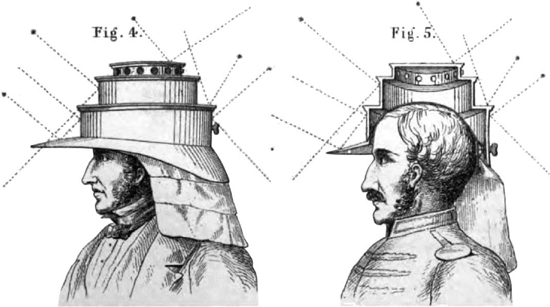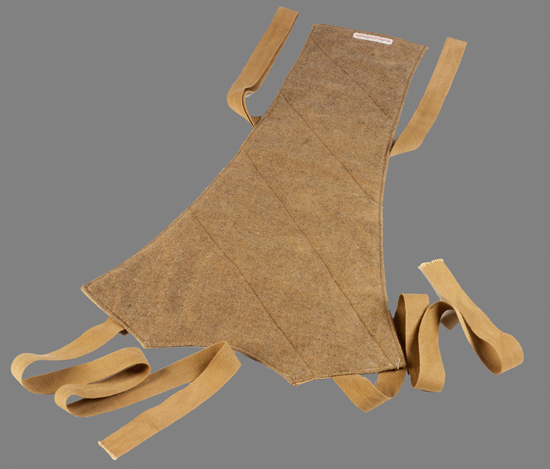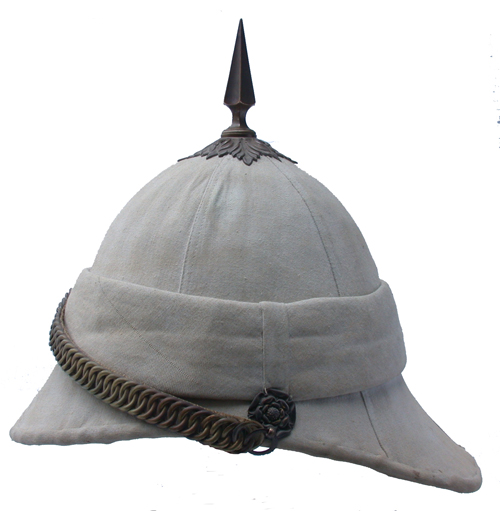Helmets made of wicker were in use in India from, at least, the 1850s and lasted into the early 20th century with units despatched to the Second Anglo-Boer War from India. These helmets and their cork Colonial equivalents were replaced by the Wolseley pattern in the first years of the 20th century and this was completed by 1910. Continue reading
Category Archives: Indian Mutiny
Mr. Julius Jeffreys F.R.S.: A Victorian Eccentric

These figures are taken from a talk given to the Royal United Services Institute (R.U.S.I.) in 1860 whose subject was ON IMPROVEMENTS IN HELMETS AND OTHER HEADDRESS FOR BRITISH TROOPS IN THE TROPICS, MORE ESPECIALLY IN INDIA. These drawings, of a civilian hat, were selected to illustrate, up front, the impracticality of this eccentric’s proposed implementation of his theories.
Julius Jeffreys, a Victorian doctor, was an HEIC Staff-Surgeon of Cawnpore and Civil Surgeon of Futtehgurh in India during the 1820s and 1830s. He was a prolific author, traveler, inventor and a champion of the welfare of British troops serving in India and the Tropics. However, although his theories were often of great merit the execution of them was sometimes quite impractical to say the least. One has to add to that his inability to express himself in a concise and readable manner, to which this author can attest having ploughed through a good deal of this man’s turgid prose. Continue reading
British Army Spine Pads

A First World War period British Army issue spine pad. The pad was worn to protect the wearer’s spine from intense heat that was thought to cause heatstroke. (Photo Imperial War Museum, author’s collection)
“The spine pad has become a dull museum piece, and it is probable that specimens are nowadays not easy to find. Yet to those living in tropical areas during the early part of the century and to those serving with the British Army in hot climates during the First World War, memories may be evoked of a piece of cloth of cotton, silk or wool, plain or quilted, several inches wide, attachable to the shirt or coat along the spine, and sometimes with a coloured lining. It is now difficult to accept that this mere piece of cloth could in any way protect from the effects of the sun. But the purpose of the spine pad was so closely linked with the development of ideas concerning body heat, fever and sunstroke, that one must be prepared to explore many early lines of thought for an understanding of its origin and its demise.” 1 So writes E.T. Renbourne , retired Major, Royal Army Medical Corps, in 1956. Continue reading

